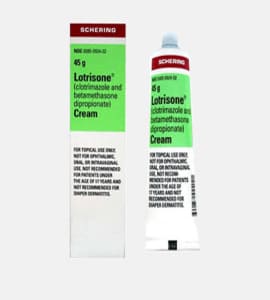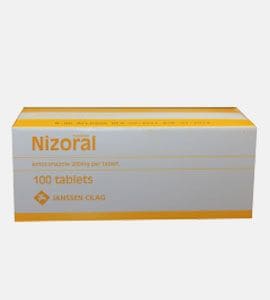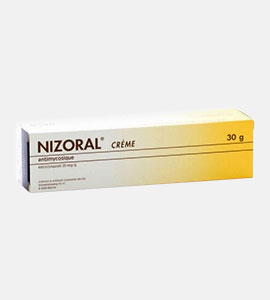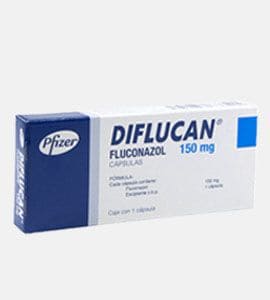Common use
Lotrisone is an anti-fungal medication which is a lotion or cream and its active components are a combination of two drugs: a steroid (betamethasone) and an antifungal drug (clotrimazole). Clotrimazole inhibits the growth of several types of fungi by affecting the process of fungal membranes formation. Betamethasone is a synthetic corticosteroid that suppresses inflammation as well as the body's immune response.
Directions
Lotrisone cream should be gently massaged into the skin and around the area affected by fungi twice a day (morning and evening). Do not use bandage or wrapping over the treated area to avoid excessive absorption of the medication. Treatment of tinea corporis or tinea cruris should not continue longer than two weeks while one of tinea pedis should not last longer than four weeks.
This medication cannot be used in children younger 17 y.o., in individuals with hypersensitivity to the components of Lotrisone, or to similar steroid and antifungal medications. Cautiousness should be exercised in adults over age 65.
The most common adverse reactions are:
• local reddening;
• blistering;
• burning;
• dry skin;
• decreased pigmentation;
• stretch marks allergic reactions like hives;
• flue symptoms;
• bacterial infection;
• irritated skin;
• peeling;
• rash;
• stinging;
• swelling;
• tingling sensation;
• edema.
Missed dose
If you forgot to take your dose in time, please do it as soon as you remember. But do not take if it is too late or almost time for your next dose. Do not take double or extra doses. Take your usual dose next day in the same regularly time.
Misuse or overuse of Lotrisone on wide skin areas can cause disorders such as Cushing's syndrome. Inform your doctor about it. Life treating overdose of Lotrisone is unlikely.
Storage
Store at room temperature between 59-77 F (15-25 C) away from light and moisture, kids and pets. Do not use after expiration term.


 English
English
 Čeština
Čeština
 Deutsch
Deutsch
 Español
Español
 Italiano
Italiano
 العربية
العربية
 Français
Français
 NZD
NZD

















